Solar Radiation in Corn Production
BY Dairyland Seed/Corteva Agriscience
Key Points:
- Cloudy, rainy periods that limit the amount of solar radiation available to a corn crop during susceptible stages of development can have significant effects on yield.
- Several experiments have used shade cloth to reduce the amount of solar radiation on a portion of the crop canopy.
- Shade studies have found that corn is most susceptible to yield loss during flowering and grain fill and effects can vary by plant density.
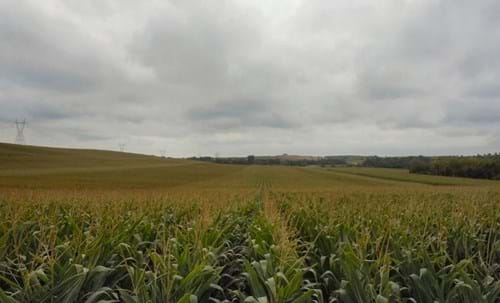
Solar Radiation and Crop Needs
- Along with water and nutrients, solar radiation (sunlight) is an essential input for plant growth.
- Plant leaves absorb sunlight and use it as an energy source in the process of photosynthesis.
- A crop’s ability to collect sunlight is proportional to its leaf surface area per unit of land area occupied, or its leaf area index (LAI).
- At full canopy development, a crop’s LAI and ability to collect available sunlight are maximized.
- From full canopy through the reproductive period, any shortage of sunlight is potentially limiting to corn yield.
- When stresses such as low light limit photosynthesis during ear fill, corn plants remobilize stalk carbohydrates to the ear. This may result in stalk quality issues and lodging at harvest.
- The most sensitive periods of crop growth (e.g., flowering and early grain fill) are often the most susceptible to stresses such as insufficient light, water or nutrients.
Cloud Effects on Solar Radiation
- Plants are able to use only a portion of the solar radiation spectrum. This portion is known as photosynthetically active radiation (PAR) and is estimated to be about 43% to 50% of total radiation.
- Amount of PAR available to a crop is reduced proportionately to cloud cover (Figure 1).
- As Figure 1 shows, PAR was reduced by 25% to 50% on partly cloudy to cloudy days, and by over 60% on rainy days.
- It is not surprising, then, that cloudy, rainy periods during susceptible stages of crop development can have significant effects on yield.
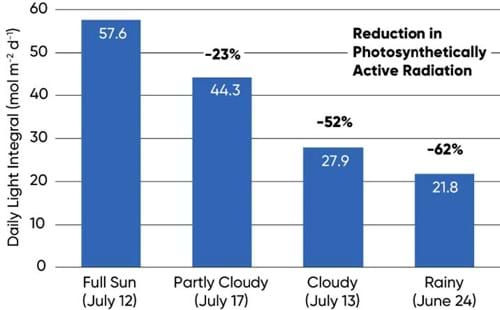
Figure 1. Daily PAR received in Johnston, IA under rainy, cloudy and sunny conditions on four different days in summer
Effect of Shade on Corn Yield
- A study using shade cloth reduced solar radiation by 55%during various crop stages (Liu and Tollenaar, 2009).
- Yield was significantly reduced by shading at the silking and post-silking stages (Table 1).
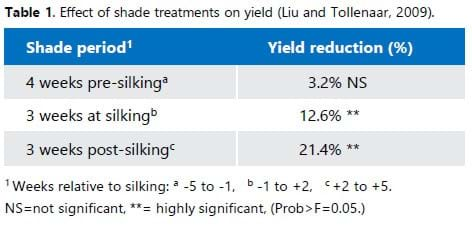
- In another study, solar radiation was reduced by 50% using shade cloth (Reed, et al., 1988).
- Yield was significantly reduced by shading at the flowering and post-flowering stages.
- Shading during flowering reduced yield primarily through decreasing the number of kernels per row.
- Shading during grain fill reduced yield primarily through decreasing kernel weight.
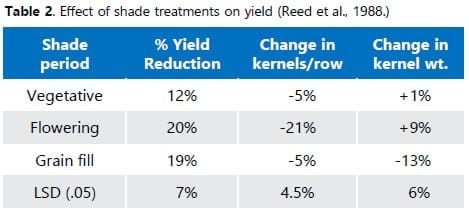
- Studies that have included multiple degrees of shading have found, not surprisingly, that the more solar radiation is reduced, that greater the effect on yield.
- Yang et al. (2019) found that impact on yield more than doubled when shading was increased from 30% to 50% (Table 3).
- When solar radiation was only reduced by 15%, yield impacts were similar across plant densities. As the degree of shading was increased, however; yield reductions were greater at higher plant densities.
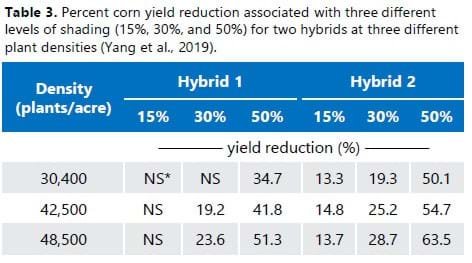
Average U.S. Solar Radiation
- Daily light integral (DLI) is the total amount of solar radiation received at a location each day.
- The southern vs. northern U.S. has higher DLIs in the fall and winter due to longer days and higher angle of the sun (Figure 2).
- From May through August, the primary DLI differences occur between the eastern and western U.S. (Figure 2).
- Northern areas have longer days but a lower solar elevation angle, so DLI is about the same as in southern areas during most of the corn growing season.
- Elevation and regional weather patterns (primarily cloud cover and humidity) also contribute to regional differences.
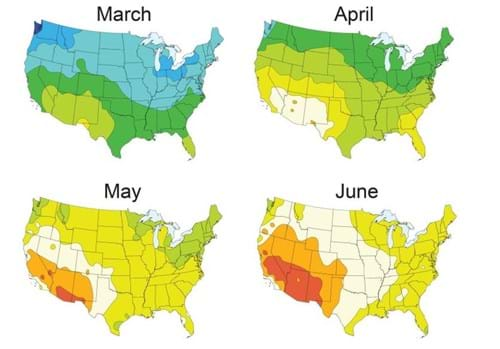
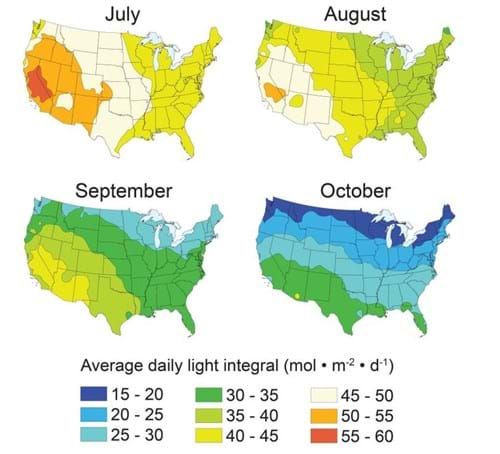
Figure 2. Average U.S. daily light integral (DLI) by month (Korczynski, et al., 2002).
References
Korczynski, P., J. Logan and J. Faust, 2002. Mapping monthly distribution of daily light integrals across the contiguous United States. Hort. Tech. 12:12-16.
Liu, W. and M. Tollenaar, 2009. Physiological mechanisms underlying heterosis for shade tolerance in maize. Crop Sci. 49:1817–1826.
Reed, A., G. Singletary, J. Schussler, D. Williamson and A. Christy, 1988. Shading effects on dry matter and nitrogen partitioning, kernel number, and yield of maize. Crop Sci. 28: 819–825.
Yang, Y., X. Guo, H. Liu, G. Liu, W. Liu, B. Ming, R. Xie, K. Wang, P. Hou, A. Li. 2019. The effect of solar radiation change on the maize yield gap from the perspectives of dry matter accumulation and distribution. J. of Integrative Agric. 20:482-493.
Authors: Steve Butzen, Mark Jeschke August 2021
